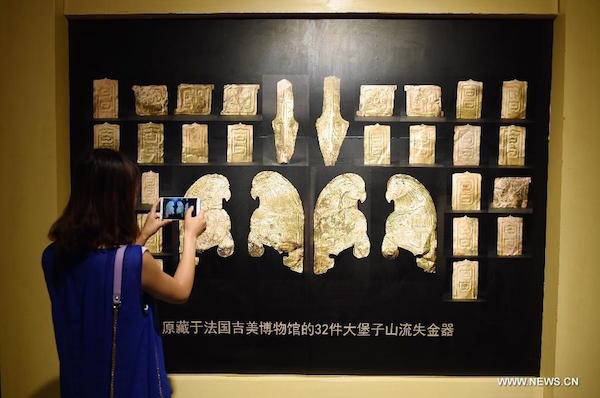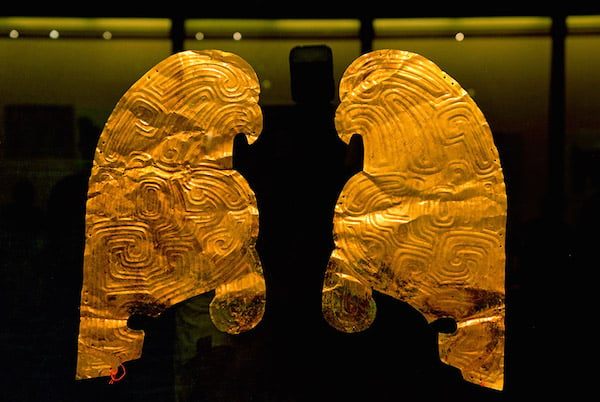Art & Exhibitions
France’s Restitution of 32 Artifacts to China Draws the Wrath of Antiques Dealer
Christian Deydier, who donated the pieces to France, isn't happy.

Photo: Xinhua via CRI English
Christian Deydier, who donated the pieces to France, isn't happy.

Lorena Muñoz-Alonso


Two of the four profiles of birds of prey on display at the Gansu Provincial Museum
Photo: Sébastien Blanc via Art Daily
This week, 32 ancient gold ornaments returned to China by the French government have gone on display at the Gansu Provincial Museum. The restituted items include 28 golden plaques and four large profiles of birds of prey, which were smuggled abroad in the 1990s.
The artifacts’ restitution proved to be a diplomatic headache that unfolded over the last decade.
The reputed antiques dealer Christian Deydier purchased the four profiles in the early 1990s from the widow of a Taiwanese dealer, from whom he had also bought the 28 plaques earlier, AFP reports.
The then President of France, Jacques Chirac, fell in love with the four profiles. Too expensive to acquire for a French museum with public funds, he convinced his friend, billionaire luxury tycoon François Pinault, to buy the solid gold artifacts for €1 million and donate them to the Musée Guimet, France’s national collection of Asian arts.
Meanwhile, Deydier donated the 28 engraved plates to the museum, too.

The 32 gold items that France has restituted to China, on display at the Gansu Provincial
Photo: Xinhua via CRI English
According to CRI English, the artifacts, dating from 770 to 476 BC, were originally located in a group of tombs in Dabuzishan, Gansu Province, that were severely looted during the early 1990s.
The controversy regarding the provenance of the relics began in earnest in 2006, when the dealer and president of the Association for the Protection of Chinese Art, Bernard Gomez, claimed they had been looted from China. An official investigation ensued, but it reached no conclusion.
But in 2010, Chinese authorities warned France that the pieces might have been looted and, in 2014, a Franco-Chinese expert panel was launched to carry out due diligence.

Francois Pinault.
Photo via: Forbes.
“An array of consistent indicators led to the conclusion that the Chinese request for restitution was justified,” Fleur Pellerin said in a written answer, as reported by AFP.
In order to carry out a swift restitution, however, the donations to the Guimet had to be retroactively annulled. This was a necessary step because, under French law, donations to state institutions are irrevocable. Once annulled, it was as if the items had never belonged to the Musée Guimet.
Pinault agreed to said process, and discreetly returned the four bird profiles to the Chinese embassy in Paris on April 14, without making any public comments.

Christian Deydier 2014
© Luc Castel
Deydier, however, has been vocal in his discontent with Pellerin’s handling of the issue. According to the Telegraph, he handed over the 28 artifacts in Beijing on May 15, coinciding with a visit of the French foreign minister Laurent Fabius to the city.
The antiquities dealer—who was the president of France’s National Antique Dealers Federation until he was ousted last summer—has accused the French government of “dropping its trousers” to gain favor with Beijing. “It’s France’s heritage which is suffering,” he told AFP, deeming the restitution “an export on the sly” and an improper legal process.
Meanwhile, the French Ambassador to China, Maurice Gourdault-Montagne, attended the exhibition’s opening at the Gansu provincial museum this week. “France is proud of its co-operation with the Chinese government to protect heritage,” the French embassy in Beijing said in a statement.